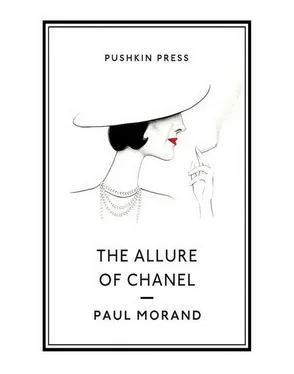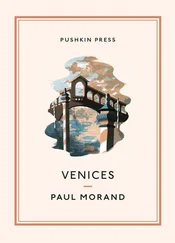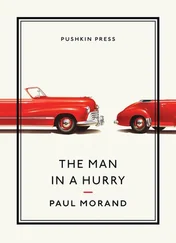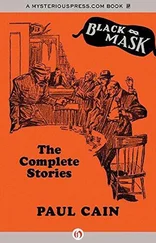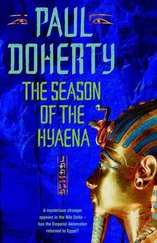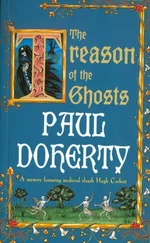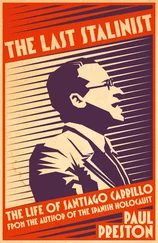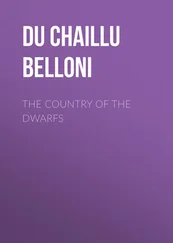“You’re a poor fool.”
He was a Basque with astonishing mental and aesthetic versatility, but where jealousy was concerned, a real Spaniard. My past tortured him.
Iribe wanted to relive with me, step by step, the whole of that past lived without him and to go back through lost time, while asking me to account for myself. One day, he took me to the heart of the Auvergne, to Mont-Dore, to set out on the trail of my youth. We found the house of my aunts … As I walked beneath this avenue of lime trees, I really felt as if I were beginning my life again. I lingered behind. Iribe walked on alone and, on the pretext of finding somewhere to stay, he asked to see my aunts. They had not changed their attitude towards me, after so many years; he was told that if I showed my face, I would not be made welcome.
He came back towards me, soothed and satisfied, having found everything just as I had described it to him. Except that the local people, instead of wearing wool and alpaca, now bought their clothes at the Galeries Lafayette, and the pretty fluted headdresses had disappeared.
WORRIED THAT REPORTERS might get bored during the fashion parade, and that certain foreign journalists might not understand my intentions, I decided one day to have a short programme printed for them to explain the collection, provide the numbers of the dresses, and give the price opposite each number etc. The key to the programme was summed up in a few preliminary sentences. In short, a kind of targeted commentary that spoon-fed the press and provided them with a nice, ready-made article that could be despatched that very evening. This programme was a success and the buyers as well as the editors were grateful to me. Couturiers in turn lost no time in adopting this original idea and, as a refinement, began to compile them themselves; they were written not just by artists, but by writers, sometimes even philosophers. The press took them up in the minor key, commented on them, touched them up and made them split hairs.
And in this way the wild lyricism and crazy ramblings that I have called “the poetry of couture” came into being, a type of publicity that was as costly as it was unimaginative and useless.
This lyricism has already begun to manifest itself at the first showing of dresses. The names I heard used in other houses to embellish their collections made me laugh so much that, as a reaction, I just gave mine numbers. Did not my colleague P call one of his creations Dream of a Young Abbot ? Ridicule can kill many things, but it has never killed the ridiculous.
The poetry of couture has appropriated genius: Claudel, Valéry, Charlie du Bos, Kafka, Kierkegaard, Dostoyevsky, Goethe, Dante and Aeschylus have all been called upon. All they produced were titles such as Knowledge of Beauty , or The Presence of the Couturier, or Theories of the Figure , such as Pretexts, Precedences and Approximations ! For followers of Man Ray there was the photographic poetry of couture, for followers of Picasso, with comments by Cassandre, a pictorial poetry of couture, a Dadaist couture, a surrealist couture, while we await an existentialist one. There was Stakhanovite couture: Madame Schiaparelli went and showed her dresses in factories.
The poetry of couture was responsible for cocktails, balls, dinner parties. The champagne flowed, hothouse flowers poured in, we walked about on a floor strewn with orchids.
“If we don’t sell well, after that!” sighed L, or P, or W, or M.
If they didn’t sell well “after that”, it was because it was a failure, or because the crisis proved to be greater than the poetry. For the more the corks popped the more sales slumped. The huge success of the Poiret balls had consequences: a deficit of sixteen million francs.
I have never made a penny out of publicity.
The couture business spent a fortune on maintaining publicity, which is more than nonsense, it’s an absurdity, since extravagance damages character. We went back to contrasting colours, which is only tolerable on stage; in town, no woman is sufficiently beautiful for that; with a dress one wears only for ten minutes, you can get away with anything; to wear it all evening is a disaster. You see pockets rising up like udders, buttons that are as big as saucers, adornments in the shape of noses, mouths on the backside, swatches of fur with eyes or hands reproduced on them, lines of Eluard on scarves, and Aragon printed all over handkerchiefs. There again, retribution has not been long in coming: American buyers, whom we used to entice with what was considered to be extraordinary, have fled (“pleasing the Americans” is an obsession of the poetry of couture), for today good taste has passed to the other side of the Atlantic, and the Americans mistrust extravagance and take no notice of these vulgar snares. Marie-Louise Bousquet, Geoffroy and Bérard were the last to realise this. Marie-Claire , which should have continued to regard itself as the poor woman’s treasure trove, wanted to bolster itself up to the level of Vogue and Harper’s Bazaar . An ordinary woman who wanted to follow Marie-Claire ’s practical advice step by step would have had to devote five hours a day to her looks.
“You’re never satisfied,” people will say to me when they read these pre-war aspersions.
I am never satisfied with myself, so why should I be with others? Besides, I like preaching.
And then I have a great sense of modesty. I believe modesty is France’s finest virtue. Lack of modesty spoils people for me; I want to restore it to them. When people show lack of modesty to my face, it’s as if they were insulting me, as if they were opening my handbag, by force, to rob me.
… I have not done with the poetry of couture …
By a natural enough transition, this leads me to talk now about inverts. Inverts have had, and continue to have, far more influence on fashion than freemasons do on radicalism, or the Dominicans did on the Front Populaire.
The invert is the enemy of woman, yet at the same time he is haunted by her. When a woman is foolish, she sees in the invert someone who is weak, funny and not in the least dangerous; when she is intelligent, she finds in him someone who can read her, understand her and listen to her; and since all women, simple or subtle, love unctuous compliments and only homosexuals know how to use praise and have the audacity, or the malice, to shower excessive accolades, women are their ideal victims. They are always prepared to believe them. They adore them; furthermore they speak the same caustic language, full of insinuations and appalling traits, and confusingly hypocritical. Inverts don’t draw back from anything: they remind me of this story about Madame de Noailles:
“How,” people said to her, “could you have complimented that lady on the frightful hat, with its gaudy colours and extravagant shape, which she wore when she made her sensational entrance to your house? Could you really have admired it?”
“I’d prefer anything as long as I didn’t have to talk to her about it,” Anna replied.
Inverts are always at women’s feet: “My lovely, darling, my angel, my enchantress …” They think there can never be too much praise; women do too. They toss garlands of compliments around their necks, strings of flowery flattery, with which they strangle them. Their beautiful lady friends are delighted: women don’t dress to please men, but to please homosexuals, and to amaze other women, because they love what is excessive.
“They are charming! They have so much taste!”
They like plucked eyebrows—once they have reassured themselves that they make their rivals look like calves’ heads—blond hair that is dark at the roots, orthopaedic shoes that make them look like invalids, their faces laden with foul-smelling grease that will repel men. And should they succeed in having their breasts removed, how they would gloat, Juvenal, how they would gloat!
Читать дальше
